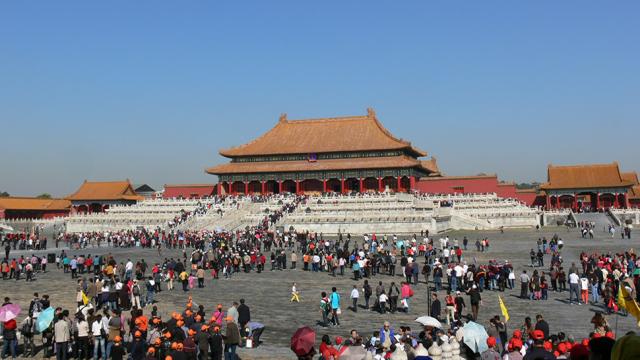The Forbidden City in Beijing was at least partially constructed with the help of an “artificial ice path”, a 70km frozen superhighway created and maintained by 16th-century construction crews to slide huge stones into Beijing.
Writing for the Proceedings of the National Academy of Sciences, authors Jiang Li, Haosheng Chen, and Howard A. Stone explain that, after combing the historic records, they were able to piece together a convincing narrative for how this extraordinary freeway of ice was made.
The building’s engineers, they explain, without a river or canal to rely on for water, first dug a series of wells along the path from quarry to construction site, roughly every 500m; water was then pumped up and spread across the ground, where it was allowed to freeze, creating a functional road surface.
It was a kind of linear ice-skating rink used for easily transporting huge carved rocks — giant pieces of geology removed from the quarry and sliding like elephants across the landscape.

It’s important to note that the authors — all of them engineers — have come to these conclusions based on their own interpretation of the historic record; an ice superhighway doesn’t leave much behind in the way of archaeological ruins, after all, and they had to rely on texts.
In other words, there are no diagrams or blueprints for how this 16th-century ice road might actually have been made — but there are ample descriptions and a few examples from the time, suggesting that “ice lubrication” might very well have been used to move large structures, and the contextual information available in the texts they refer to makes this a compelling possibility.
The authors also cite one incredible present-day case, however: similar frosty methods were used, they write, to move “an entire 1200-ton building of the Anda Railway Station (latitude 45°N) on an artificial ice path during the period from January 14 to February 4, 2013, in Heilongjiang Province, China.” (An unreadably chaotic auto-translation of a Chinese news item goes into what appears to be more detail here — good luck!)
While their own paper goes on to describe some of the engineering specifics — slope, friction, gradients, temperature — speaking only for myself, I am far more interested in the weird visions such an ice road conjures up, as if heroic Chinese engineers, working five centuries ago, could have hosted a bewildering and surreal winter construction festival, with elaborate buildings large and small — even detached, fully furnished rooms — all sliding around on the ice like a Thames Frost Fair, buildings slipping past one another in a lazy choreography temporarily mistaken for urban design.

Thames Frost Fair (1683-84), by Thomas Wyke, via Wikipedia
We’ve seen rollingcities: why not ice-skating ones?
Recall, for example, the insane plan to build a colossal artificial glacier in the heart of Ulan Bator, or the use of military ice-engineering techniques to create bridges and roads in the Arctic, or even the fact that artificially refrigerated permafrost, held in place with cooling pins, currently supports the continent-spanning infrastructure of the Beijing-Lhasa railway; applying this to the construction and maintenance of our cities — whether we’re building monuments or maintaining infrastructure — would be utterly absurd but surreally exquisite, a kind of permanent Harbin Ice Festival we can all live within. [Science News]
Pictures: Wikipedia
